Verbit offers a range of services, including transcription, captioning, audio description and more, tailored to various verticals like media broadcast, legal and education. One Ordering, developed to enable scalable growth and transition from high-touch to low-touch services, serves as a centralized hub for all Verbit customers to effortlessly book live services.
As the UX designer for this product I was involved from the discovery phase, where I conducted interviews with customers across various verticals to understand their needs, to the planning and design of a user flow that would streamline diverse workflows. The product underwent continuous testing by different customers, allowing us to iteratively refine and evolve the design into a seamless ordering experience. This collaborative process involved close coordination with stakeholders, customers, and development teams to ensure the product's success
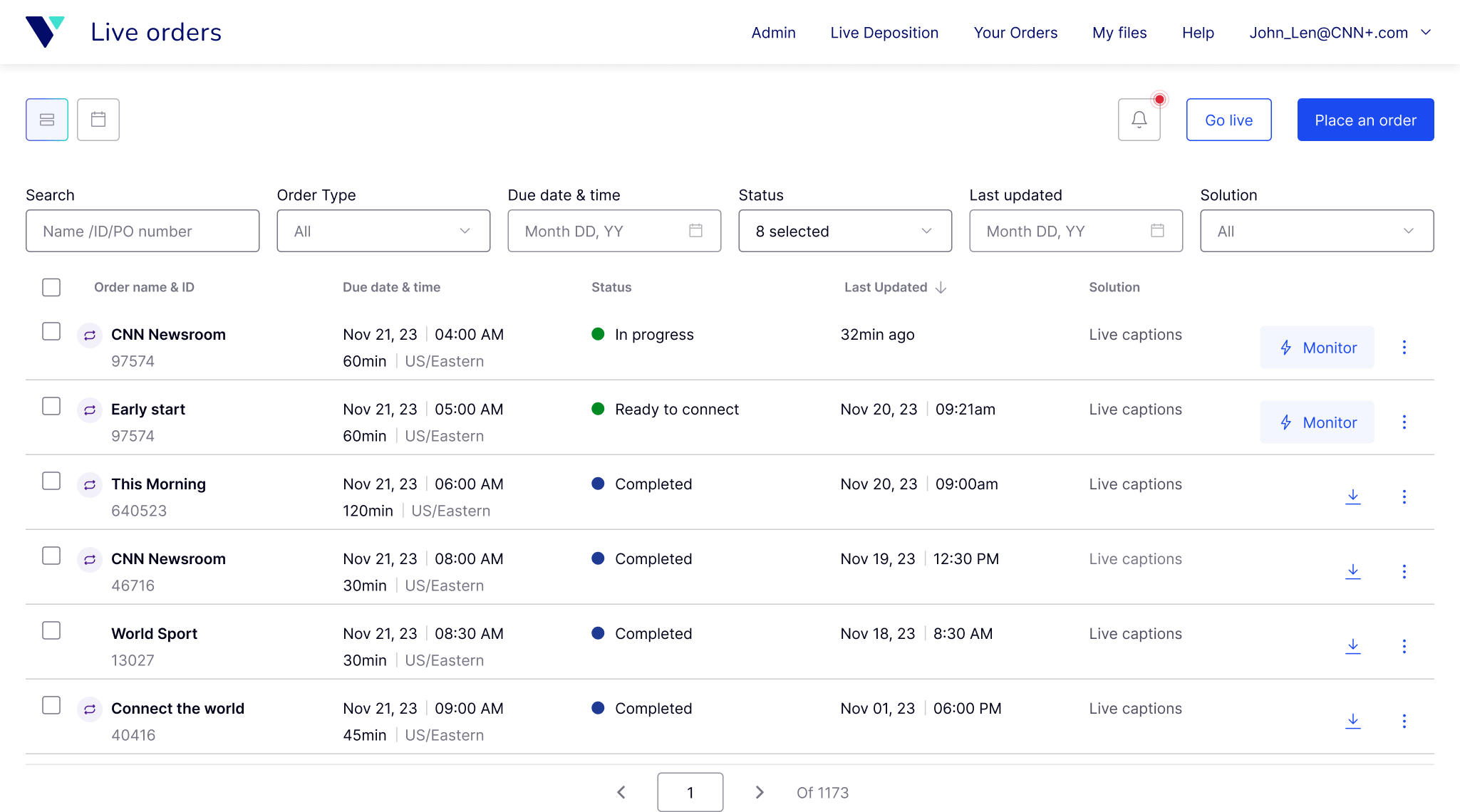
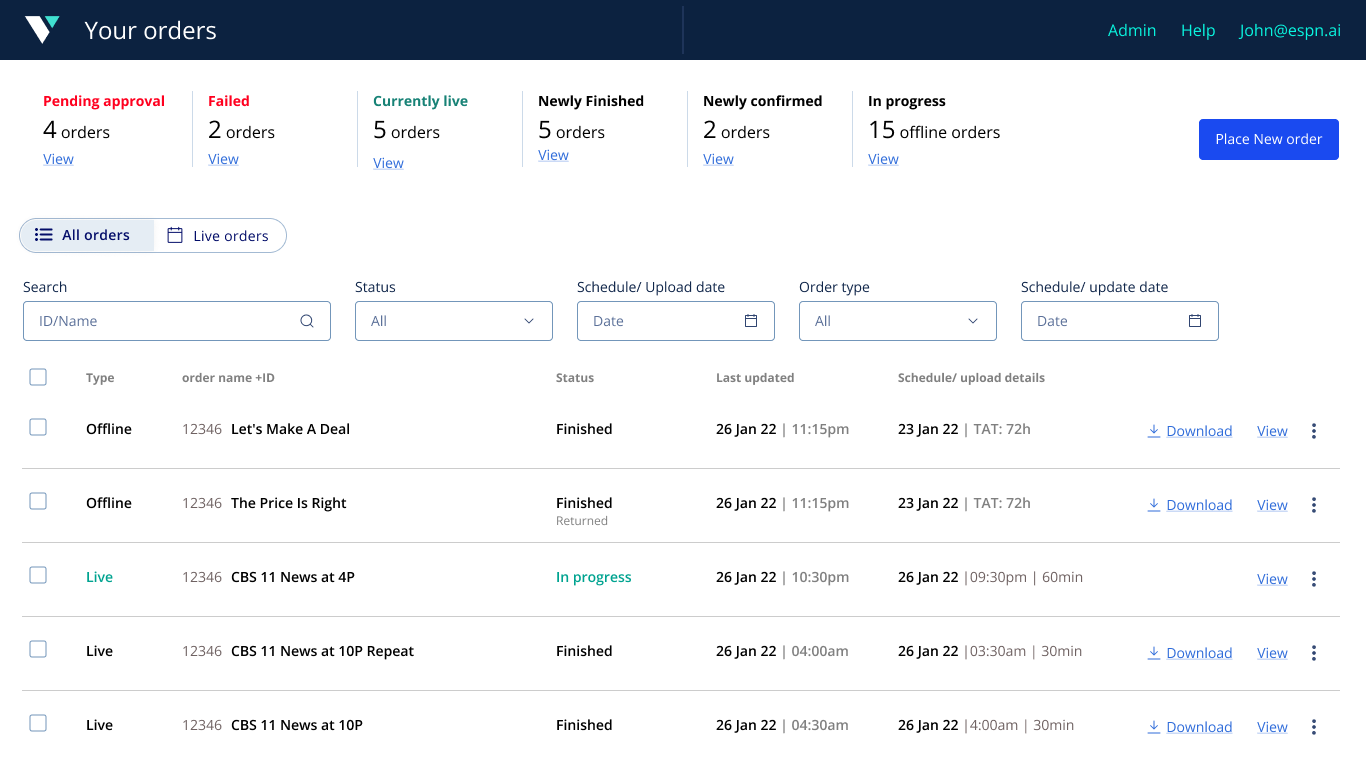
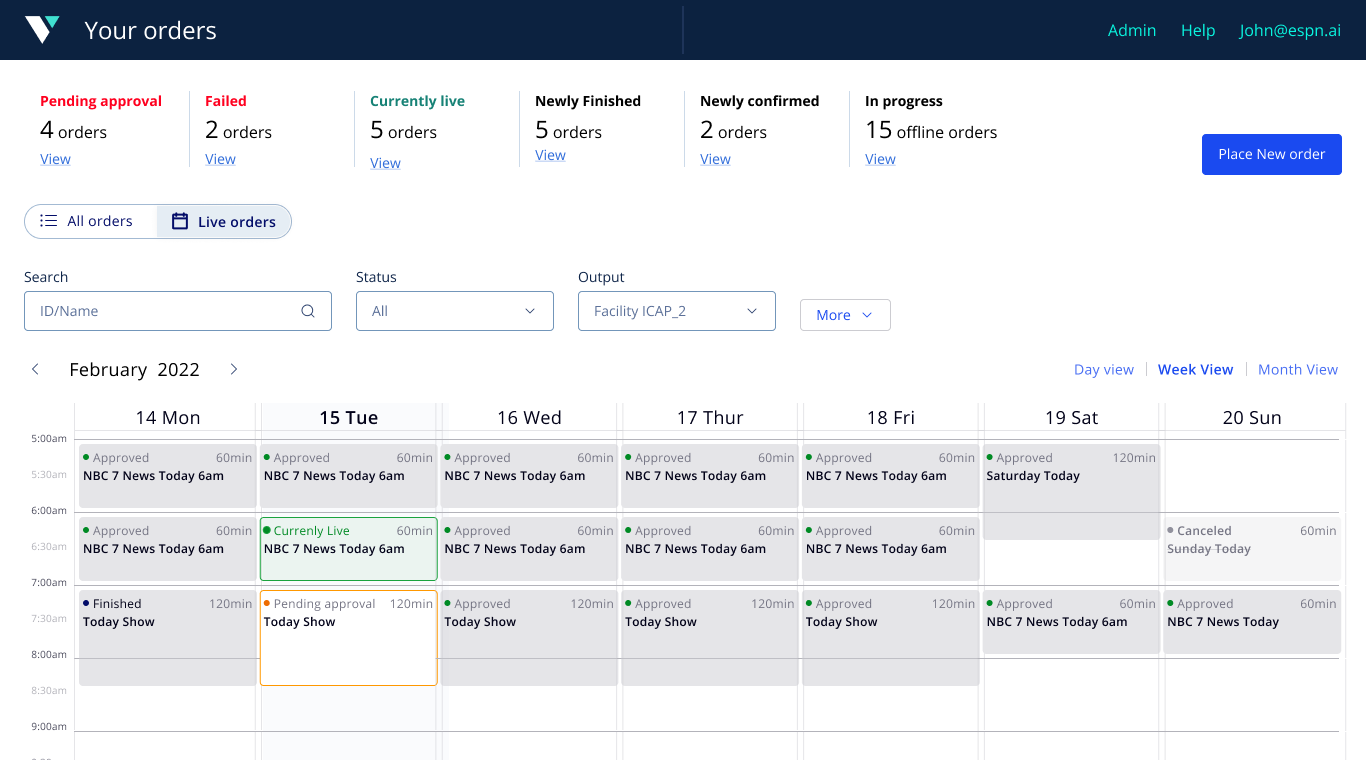
Our journey began with intense discovery sessions, often meeting with customers late into the night. We conducted numerous interviews with users from various verticals, aiming to understand their unique needs. Weekly meetings with internal design partners, development teams, customer support, operations, and stakeholders were crucial. The focus was on live sessions, consolidating different order forms, and mapping user intents while addressing technical challenges and dependencies. Setting ground rules for accessibility, including color blindness support, full keyboard navigation, and screen readers was paramount.
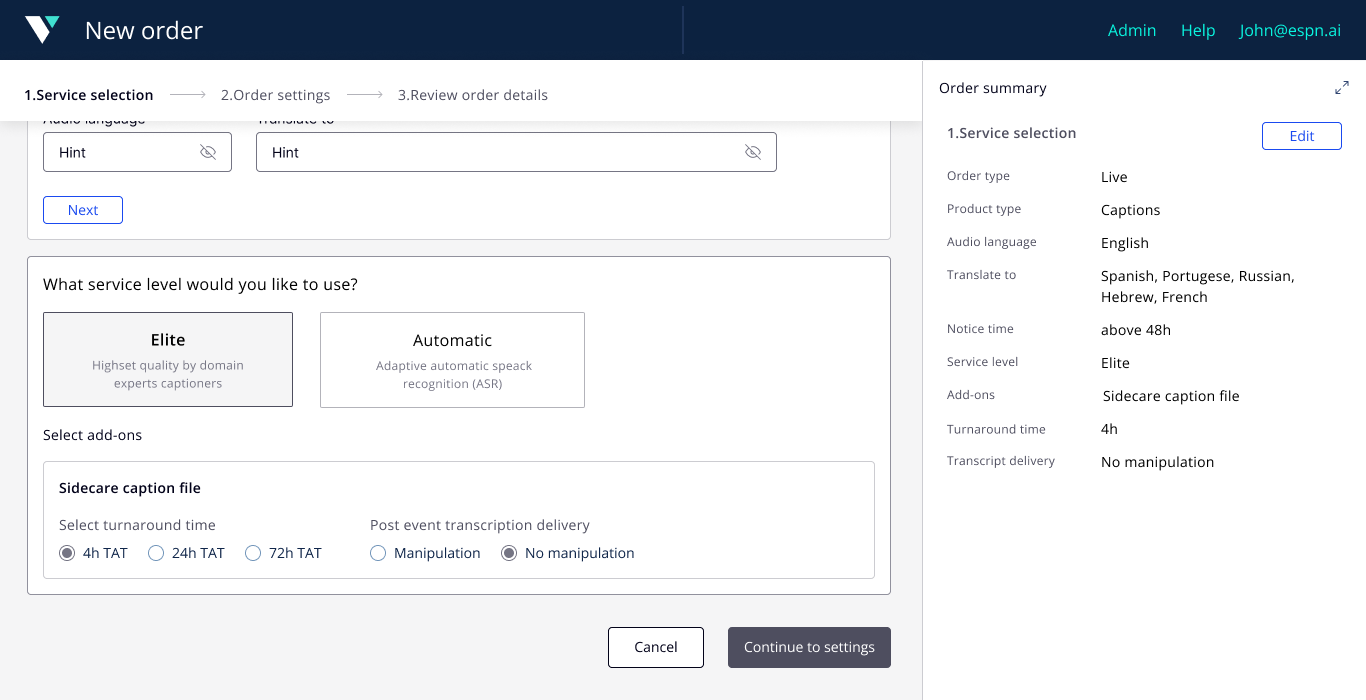
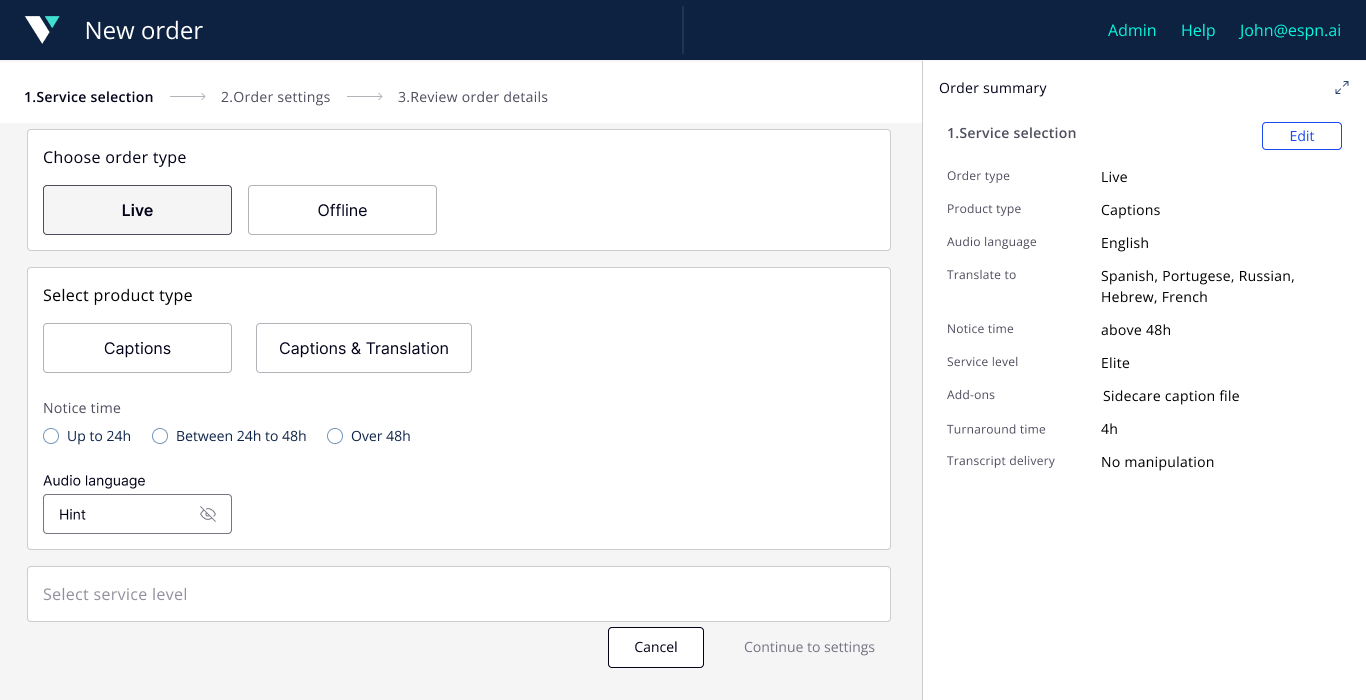
The first major challenge was managing orders and booking sessions. Our goal was to support the full lifecycle of orders, eventually handling both live and post-production orders. Booking a live session solution was complex, involving long and intricate order forms that needed simplification. We designed concepts for managing orders, including a list view for all orders and a calendar view for live bookings. For booking live sessions, we separated the form into steps, used basic microcopy, distinguished required data from settings, and added support for order templates.
Weekly meetings with stakeholders, design partners, development teams, customer support, and operations continued as we iterated on our designs. Our first UX research phase aimed to identify problems or barriers users encountered with the new design. We defined research KPIs aligned with business goals and conducted remote moderated usability tests with primary (customers) and secondary (Ops) users. The feedback was positive, with no major barriers identified, leading to stakeholder approval and the MVP rollout for specific verticals.
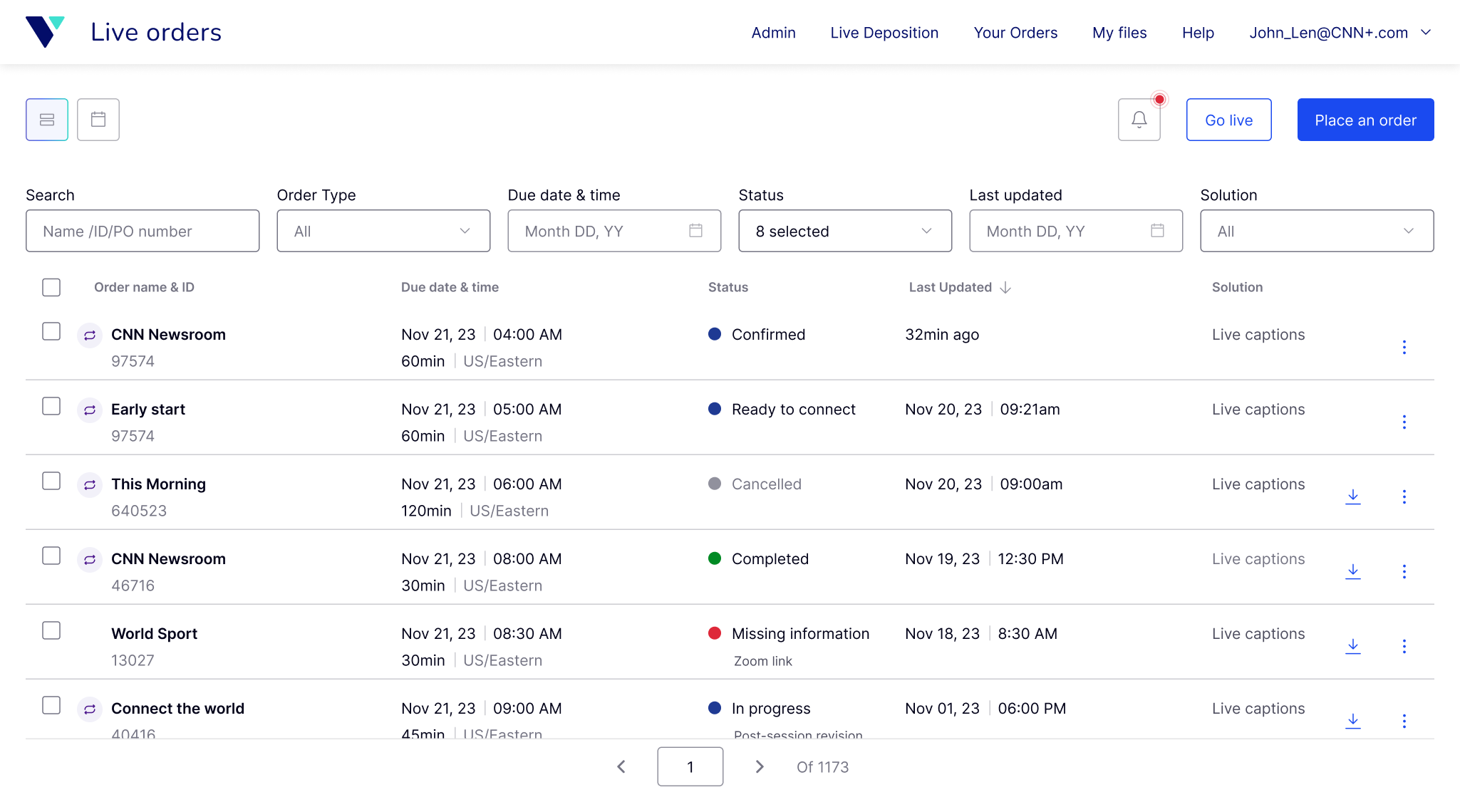
However, cracks began to appear. The MVP didn't support media flows, adoption was low, and feedback from support was not positive. Management was skeptical, and it was clear we needed to revisit our approach. We went back to the drawing board to simplify the design further by removing dependencies and opting for one long form. A business trip to meet with Vitac media teams and customers provided invaluable insights, leading to more iterations and research. Weekly meetings with all stakeholders and internal teams continued as we refined our design.
The second UX research phase reiterated our initial methodology and KPIs. The feedback was promising: the table was clear and informative, the form was short and intuitive, and the system was generally easy to use. Stakeholders were pleased and we prepared for the broader rollout. The ordering hub was deployed to all Verbit customers, now supporting media flows. Full adoption followed, with continuous improvements based on ongoing collaboration with customers, customer support, and operations.
The story of our UX/UI project is one of persistent discovery, design, iteration, and collaboration. From late-night meetings to overcoming initial setbacks, our commitment to understanding user needs and refining our solutions led to a successful rollout. While the ordering hub is now fully adopted and operational, we remain dedicated to enhancing its capabilities, ensuring it meets evolving user needs and business goals. This project highlights the importance of user-centric design, iterative development, and the power of continuous feedback.